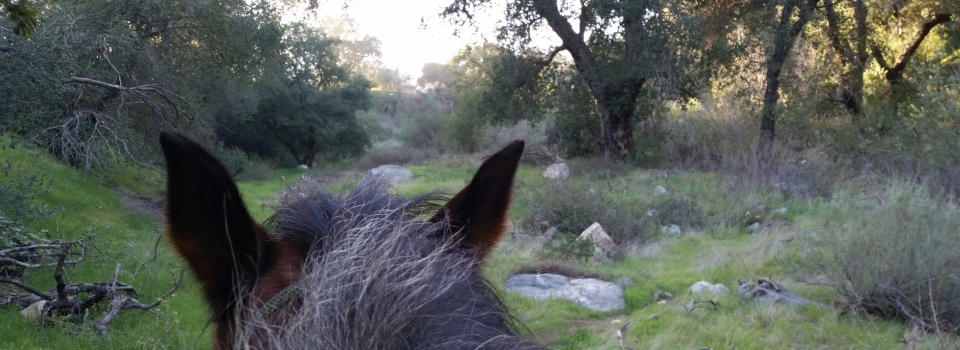Not all the time; that would be silly.
There’s a dogma among riders and trainers that a horse should move at the gait and speed that you choose, all the time, every time, and that any deviation is disobedience or “disrespect”. Allowing the horse to routinely choose gait, speed, or path is definitely dangerous, and a skilled rider should be able to clearly communicate expectations to the horse. But by being absolute and unyielding in your expectations of the horse, you are cutting off one of the most useful ways your horse has of communicating to you.
At liberty, horses almost always choose their own gait and speed. Even a horse running with a herd is choosing the safety of that herd. About the only exceptions are a horse being chased by a real or imagined predator, and a horse stuck in quicksand. Studies have shown that horses often choose gaits and speeds that are most efficient; this is hardly surprising.
Adding a rider to the mix changes everything. When a horse deals with the weight and balance of the rider, different gait/speed combinations become more efficient. Combinations that are not efficient have to be trained. Classical western horses have to be trained to the jog, which is slower than the trot they might choose themselves, and to the lope, which is slower than their preferred canter. Upper-level competitive dressage horses are trained not only to slower speeds, such as the canter pirouette, passage, and piaffe, but also extended trots. It’s true that some horses and even breeds have conformation that makes these combinations easier, but that doesn’t mean that they are in any way effortless.
So what might a horse be communicating by choosing a gait and speed that you didn’t ask for? The stock answer is “I’m the boss of you!” Some riders and even trainers are so insecure in their connection with horses that they always seize that explanation. Sometimes it’s even correct. But what if the horse had no inclination to be the boss of you yesterday, and is perfectly cooperative tomorrow?
Some other things your horse might be telling you:
- I hurt. I’m developing an abscess, or my arthritis is acting up.
- I’m not strong enough to do this for an extended period.
- I’m scared. If you weren’t on my back, I’d run away, but I’m doing this displacement activity instead.
- I’m grumpy, my ovaries hurt, and I’m doing everything I can not to buck you off, which I’d never do anyway.
- I feel great! I want to run in the sun, power through the flowers, and I really don’t understand why you’re not down with that.
- I feel great! I want to nap in the sun, munch on the flowers, and I really don’t understand why you’re not down with that.
- You’re crazy! You’re asking me to risk losing my footing and killing us both.
- You’re throwing me off-balance! I hear there are these things called “lessons”.
- I’m sick. If you took my temperature, or even looked at my eyes, you’d realize that.
If my horse were trying to tell me any of these things, I’d want to know about it. Various horses at various times have told me most of these things. If I passed it all off as disobedience, I’d be telling my horse “You don’t matter.” That’s not a good basis for a trust relationship.
If I passed it all off as disobedience, I’d be telling my horse “You don’t matter.”
One of the trails Buddy and I take away from the stable has a gentle incline right as we leave the property. He always wants to trot it. If I ask him to walk, he will, but I don’t, because I can learn enough from the speed of that trot, the way his body moves, and the way his head moves to know whether there are any issues that I should address, or that might mean we shouldn’t go out at all. And the time he volunteered a walk, I could tell he wasn’t well, and we turned around and went back.
And then there’s the stop.
It’s true that horses can stop because they are lazy. Or exhausted. Or worried. Or confused. It’s hard to imagine a response that usefully addresses all those things (and more) without knowing (or even caring about) the reason.
When I first rode Buddy in what I like to call “contrived obstacle courses”, he would sometimes stop dead before an obstacle. I was green, and there was peer pressure, and I even thought about getting spurs. But I learned that if I kept him facing the obstacle without pushing him to go forward, he would eventually figure it out and go forward on his own, because he knew that’s what I expected. And once he realized that he wouldn’t be kicked at every obstacle, he calmed down and took them more easily.
So if your horse insists on a different gait or speed from the one you requested, think about letting him take it for a few strides until you figure out why. Remember that horses live in the present. Your horse doesn’t plot disobedience based on your past weaknesses. Give him the chance to tell you what’s on his mind, now.
